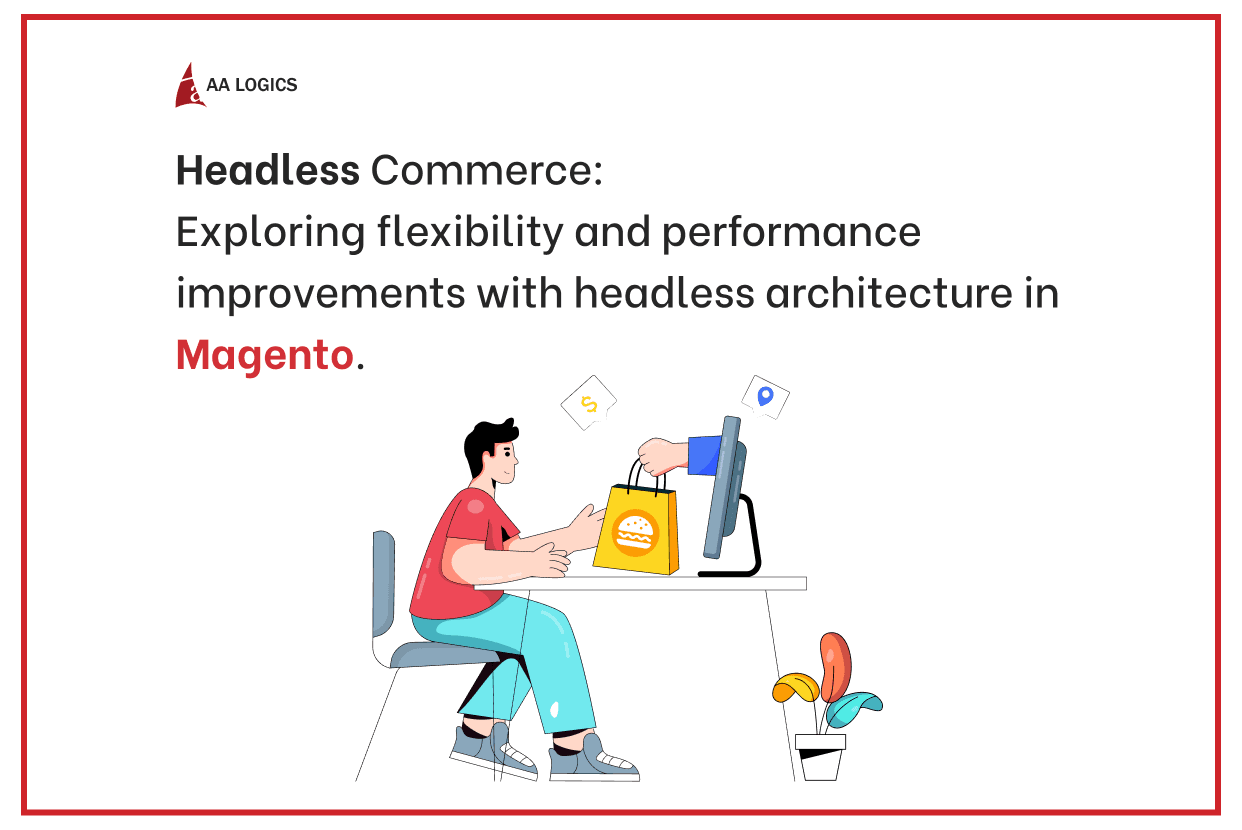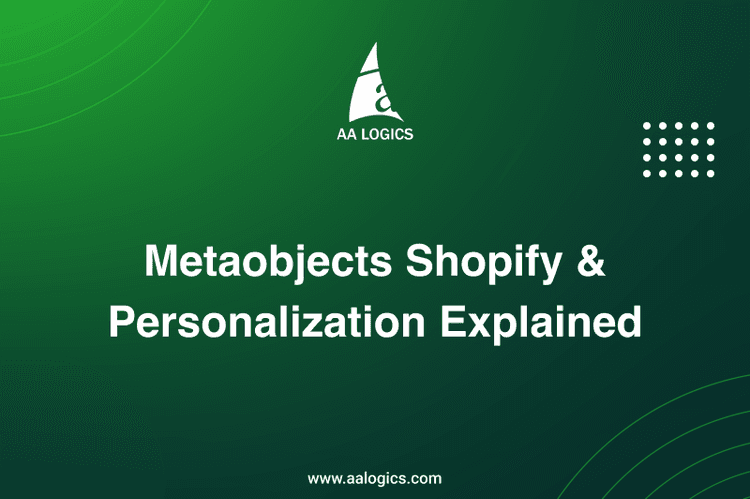Headless Commerce in Magento: Flexibility & Performance

The rapidly evolving digital landscape demands eCommerce platforms that are flexible, fast and scalable to stay ahead of the competition. Enter headless commerce a cutting-edge architecture that is revolutionizing the way companies approach online shopping.Headless commerce separates the front-end (customer-facing experience) from the back-end (where data and processes reside), giving businesses unparalleled flexibility and enhanced performance.
What is Headless Commerce ?
Headless commerce refers to a separation between the front-end and back-end of an eCommerce platform. With headless commerce, the user interface (UI) and customer experience layer are decoupled from the backend infrastructure that handles data processing, payment and order management. By leveraging headless architecture, businesses can use APIs to connect these layers, providing enhanced customization, flexibility and scalability. This decoupling of the front-end and back-end enables companies to develop unique, performance-driven eCommerce solutions without the constraints of traditional monolithic systems.
In traditional eCommerce systems, the front-end and back-end are tightly coupled, limiting the flexibility of businesses to innovate in design, performance, or technology integrations. However, headless commerce allows brands to unlock a new world of possibilities while maintaining the power of systems like Magento at the back-end.

Why Use Headless Commerce for Magento?
Magento is a robust eCommerce platform that has been a favourite for businesses seeking powerful back-end capabilities. By adopting a headless commerce approach, companies can leverage the flexibility and performance advantages offered by Magento’s back-end while gaining complete control over the front-end experience. Below are the key benefits of integrating headless commerce with Magento:
1. Greater Flexibility with Headless Commerce
One of the most significant advantages of headless commerce in Magento is the increased flexibility. Since the front-end is decoupled from the back-end, developers are free to design the front-end experience using modern technologies like React, Angular, or Vue.js. This allows for a highly customized, performance-optimized shopping experience tailored to your business and your customers needs. Whether you want to integrate mobile apps, voice commerce, or IoT-based solutions, headless commerce makes it possible without compromise.
2. Faster Site Performance with Headless Architecture
When it comes to eCommerce, speed is king. Slow-loading websites can lead to abandoned carts and lost sales. With headless commerce in Magento, businesses can take advantage of the separation between front-end and back-end to optimize performance. By leveraging advanced front-end technologies, developers can create lightning-fast websites and mobile apps that load quickly and provide a smooth, responsive user experience—critical for maximizing conversion rates.
3. More Customization Options with Headless Commerce
Unlike traditional eCommerce platforms, headless commerce offers unmatched customization options. With Magento’s headless architecture, businesses have the freedom to design unique user interfaces that align perfectly with their brand identity. Moreover, headless commerce makes it easier to integrate third-party services such as personalized recommendations, dynamic pricing and marketing automation tools. This opens the door to highly personalized shopping experiences that can drive engagement and conversion rates.
4. Future-Proof Your Business with Headless Commerce
The eCommerce industry is rapidly changing and businesses need to be adaptable. With headless commerce, Magento users can future-proof their platforms. The API-first nature of headless commerce means that businesses can easily integrate new technologies like AI-driven product recommendations, virtual reality shopping experiences, or chatbots as they emerge. As customer expectations evolve, headless commerce ensures your business can quickly adapt without the need for an entire platform overhaul.
5. Easier Integrations and Scalability with Headless Commerce
As businesses grow, they require an eCommerce platform that can scale without compromising performance. Headless commerce in Magento simplifies integrations with other business systems, such as CRM, ERP, or marketing automation tools. This creates a seamless, efficient workflow and minimizes operational disruptions. Additionally, headless architecture allows businesses to scale individual components (like the front-end or back-end) independently, ensuring smooth growth even as traffic and demands increase.
Examples of Headless Magento in Action
Several major brands have already embraced headless commerce to enhance their online shopping experience. For example:
Nike uses headless commerce to provide a consistent and seamless shopping experience across its website, mobile app and in-store digital interfaces. This multi-channel approach is possible because of the flexibility offered by headless commerce in Magento.
Coca-Cola adopted headless commerce to create a fast and customizable online shopping experience that provides customers with an intuitive, mobile-first interface.
Lancôme the luxury beauty brand, uses Magento’s headless commerce capabilities to power its Progressive Web App (PWA), providing users with a fast, app-like experience on mobile devices.
How to Get Started with Headless Magento
Adopting headless commerce in Magento may seem like a complex transition, but with careful planning and the right expertise, it can significantly enhance your business. Here's how to get started:
Assess Your Business Needs: Evaluate whether your business will benefit from the flexibility, speed and customization advantages of headless commerce.
Choose an Experienced Development Partner: Work with a development team that has expertise in implementing headless Magento solutions to guide you through the transition.
Plan Your Front-End Strategy: Determine how you want your front-end to look and function and ensure it integrates well with Magento’s back-end through APIs.
Prepare for Integrations and Scaling: Make sure your existing systems can handle the integration and scaling demands of headless commerce.
Conclusion
Headless commerce offers significant advantages for businesses looking to enhance their eCommerce strategy. By leveraging Magento’s headless architecture, businesses can create highly flexible, fast and customizable shopping experiences that meet modern customer expectations. The ability to scale, integrate new technologies and provide future-proof solutions makes headless commerce a wise investment for businesses looking to stay competitive in the ever-changing digital landscape.
If you’re ready to explore how headless commerce can transform your eCommerce platform with Magento, get in touch with an experienced Magento development partner today to start your journey toward unlocking the full potential of headless commerce.
FAQs
1. What is headless commerce and how does it work?
Headless commerce separates the front-end (customer-facing experience) from the back-end (eCommerce infrastructure), allowing both to communicate via APIs. This provides businesses with flexibility to create custom front-end experiences while using powerful back-end systems like Magento.
2. What are the benefits of using headless commerce in Magento?
By adopting headless commerce in Magento, businesses gain flexibility in design, improved site performance, easier integrations and scalability. It also future-proofs the system by making it easier to incorporate new technologies and adapt to changing market demands.
3. What is the difference between traditional eCommerce and headless commerce?
In traditional eCommerce, the front-end and back-end are tightly integrated, limiting customization and flexibility. In headless commerce, the two layers are decoupled, giving businesses more control over the front-end while maintaining powerful back-end systems.
4. Is headless commerce suitable for all types of businesses?
Headless commerce is particularly beneficial for businesses requiring high customization, performance and scalability, especially those operating across multiple channels or looking to integrate advanced technologies like AI, voice commerce, or chatbots.
5. How difficult is it to implement headless commerce with Magento?
Implementing headless commerce with Magento requires technical expertise, but with the right development team, the process can be seamless. It involves careful planning, a clear front-end strategy and proper integration with Magento’s back-end systems.
Featured Articles

Magento 2 Product Import Guide: Integrating Foxway with Magento 2 Using AALOGICS Supplier Feed Extension
Read More
How Modaestile Launched a Fully Functional Mobile App in Record Time — Without Expensive Custom Development
Read More
What’s Changing in Digital Marketing Right Now — And How Smart Brands Are Adapting
Read More
How Riazone Transformed Its Slow Magento Storefront Into a Lightning-Fast Graph Commerce Experience — In Record Time
Read More